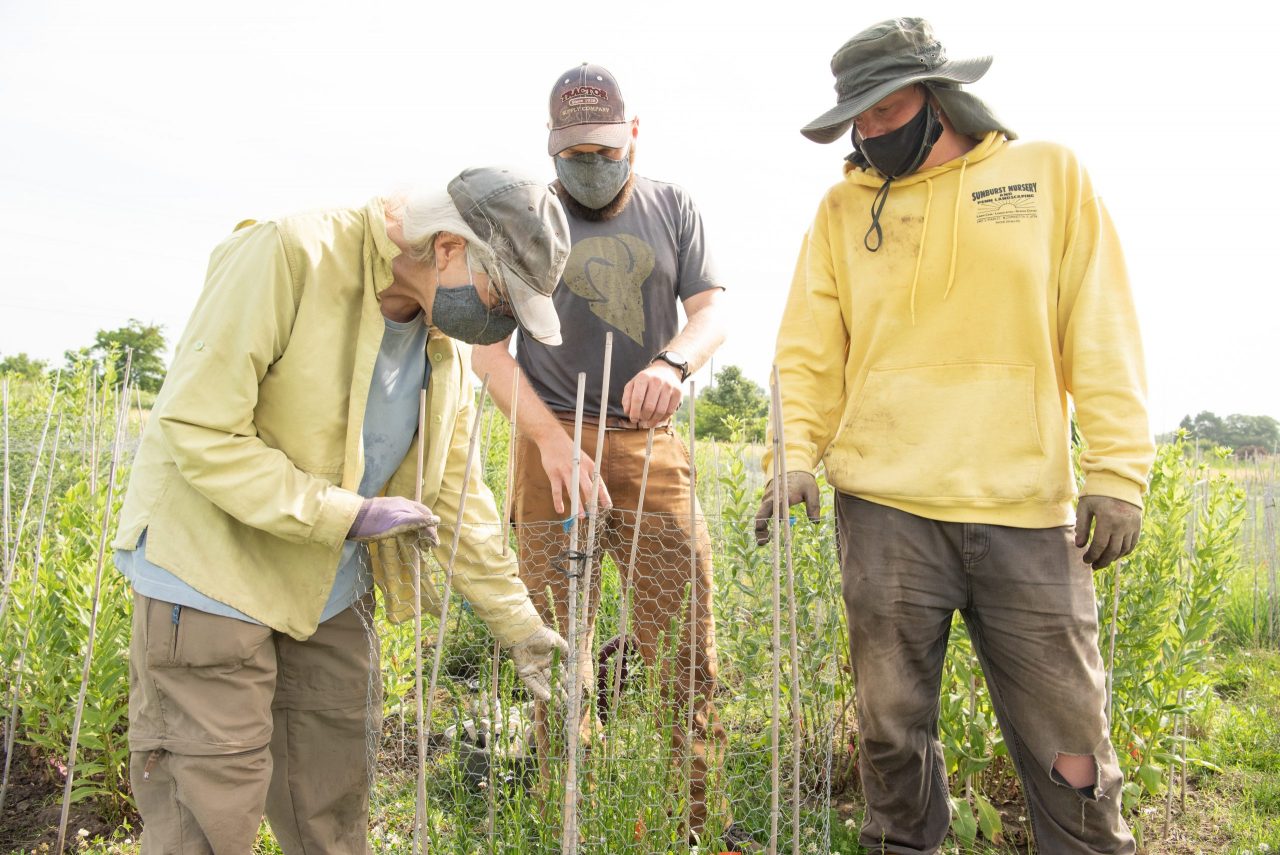The ability to adapt to change is integral to success in turbulent times. After years of working in the advertising industry in Las Vegas, Jackson Edwards has returned home to start a new career. The Bloomington native now studies conservation biology at Illinois State and researches soil and plant diversity under Dr. Diane Byers, associate professor of Evolutionary Ecology.
“This project here is all about the soil microbial community and how that impacts plant diversity across the prairies,” said Edwards. “We look at the feedback from the plants themselves and how they interact with the soil and microbial community in a positive or negative way.”
Byers and her students are conducting their study in conjunction with researchers from the University of Kansas and The Land Institute, as well as a group from China. The study is titled “Dimensions US-China: Collaborative Research: Microbe Eco-Evolutionary Feedback As Drivers of Plant Coexistence, Diversity Gradients, and Overyielding.”
The Illinois State portion of the research is funded by an $85,000 grant from the National Science Foundation (NSF). The American researchers benefit from collaborating with their China counterparts due to the differing ecological conditions the investigators are observing.
“They are working in Mongolia grasslands, where they are testing the same hypothesis,” said Byers. “The conditions are drier. Their diversity isn’t as high as ours, but they’re doing the same kind of experiments as we are.”
Before the pandemic, the American and Chinese groups planned to travel for in-person collaboration. The subsequent coronavirus (COVID-19) restrictions have resulted in regular Zoom meetings.
The pandemic has not otherwise interrupted the research being done in Byers’ lab.
“Most of our work is outside, so we can interact a lot more,” said Byers. “We have our plots spaced apart for experimental reasons. When we’re out in the field, we always make sure that we’re working in different rows and plots, and we always wear masks. We constantly clean our tools and use hand sanitizer.”
Byers and her students are maintaining prairie plant species, from native prairies in Illinois and Kansas, across hundreds of experimental plots located at Illinois State’s Horticulture Center. The soil in these plots are being used for greenhouse and lab assays. The researchers also embark on “field trips” to local prairies. They frequent the Weston Cemetery Prairie located in McLean County, as well as three prairies located near Paxton, which is about an hour’s drive east of campus.
“We’re collecting seeds for experiments that we’re doing in the greenhouse,” said Byers.
Byers strives to foster an immersive environment for her students and gives them many roles throughout the research. Edwards works closely with Justin Howard, a senior from Villa Park majoring in plant biology.
“At the Horticulture Center, I could be measuring the size of plants, scoring plants for diseases, or weeding plots,” said Howard. He joined the lab last semester and plans to continue until he graduates. “In the greenhouse, we might be mixing and sterilizing soil, transplanting seedlings into different inoculums, or simply watering the plants. If we are in the prairie, I could be found searching for the plant species of choice, marking its location, determining its sex, and recording data.”
The researchers are in the second year of the five-year study. As the group begins to analyze their data, Edwards can already see how much he has taken away from the research experience since joining the group in May. “Getting into this field shows me just how much work can go into these projects,” said Edwards. “It’s just so great to be a part of this because I can see the whole project from start to finish. This is a wonderful project and I’m more than happy that Dr. Byers let me be a part of this.”
Howard is equally grateful for the mentorship he has received from Byers. “While the project is big, I personally get a one-on-one mentor every day with Dr. Byers,” said Howard. “She is out there right by your side doing everything she asks you to do and is constantly taking breaks from the task to teach you something. It is a rare day if Dr. Byers doesn’t teach you at least five new things.”
Over the years, Byers has seen firsthand the positive impact that research opportunities have had on her undergraduate students. “We encourage students to get involved in research because they learn a lot more working directly with faculty and graduate students,” said Byers. “It’s a very good experience for them, and it’s really rewarding for us, too.”
Find out more about student research opportunities and grant funding at Illinois State University by visiting the Office of Student Research’s website.

